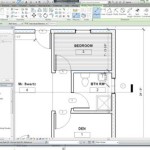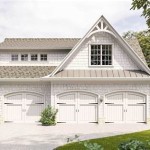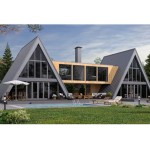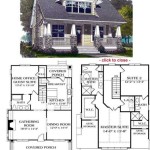Simple DIY Bird Feeder Plans
Attracting birds to a garden or outdoor space can be a rewarding experience. Providing a reliable food source through a bird feeder is a fundamental step in achieving this. Constructing a bird feeder is a relatively simple project that can be accomplished with readily available materials and basic tools. This article will explore several simple DIY bird feeder plans, offering detailed instructions to facilitate successful construction.
Plastic Bottle Bird Feeder
One of the most accessible and cost-effective bird feeder designs involves repurposing plastic bottles. This method is environmentally friendly and requires minimal materials.
Materials Required:
- Plastic bottle (e.g., soda or water bottle)
- Craft knife or scissors
- Wooden spoons or dowels
- String or wire
- Bird seed
Construction Steps:
1. Preparation: Begin by thoroughly cleaning and drying the plastic bottle. Remove any labels or adhesive residue. This ensures optimal hygiene for the birds and prevents contamination of the bird seed.
2. Creating Feeding Ports: Using a craft knife or scissors, carefully create two opposing holes in the bottle's side, approximately 2-3 inches above the bottom. These holes should be large enough to accommodate the handle of a wooden spoon or a short length of dowel rod. Repeat this process on the opposite side of the bottle, offset slightly from the first set of holes.
3. Inserting Perches: Insert the handles of the wooden spoons (or the dowel rods) through the holes, creating perches for the birds. The spoon bowls or dowel ends should extend outward from the bottle, providing a stable surface for birds to land and feed. The opposing spoon/dowel arrangements provide balance and stability to the feeder.
4. Creating the Hanging Mechanism: Near the bottle cap, create two small holes on opposite sides, using the craft knife or scissors. Ensure these holes are large enough to accommodate the string or wire that will be used to hang the feeder. Thread the string or wire through the holes and tie securely, creating a loop for hanging.
5. Filling and Deployment: Unscrew the bottle cap and fill the bottle with bird seed. Replace the cap tightly. Hang the feeder from a tree branch, shepherd's hook, or other suitable location, ensuring it is protected from harsh weather conditions and predators.
6. Maintenance: Regularly check the feeder for seed levels and refill as needed. Clean the feeder periodically with warm, soapy water to prevent the spread of disease among the birds. Ensure the feeder is completely dry before refilling with bird seed.
Variations on this design could include using different sizes and shapes of plastic bottles, adding more feeding ports, or decorating the bottle externally with paint or other materials. However, ensure any decorative elements are non-toxic and safe for birds.
Pine Cone Bird Feeder
Pine cone bird feeders are a natural and visually appealing option that can be easily created with minimal effort and materials. These feeders are particularly effective for attracting birds during the colder months.
Materials Required:
- Large pine cones
- Peanut butter (or other bird-safe nut butter)
- Bird seed
- String or twine
- Butter knife or spatula
Construction Steps:
1. Preparation: Gather large, open pine cones. Ensure they are relatively clean and free from debris. If necessary, bake the pine cones in a low-temperature oven (approximately 200°F) for a short period (15-20 minutes) to kill any insects or microorganisms that may be present. Allow the pine cones to cool completely before proceeding.
2. Applying Peanut Butter: Using a butter knife or spatula, generously coat the entire surface of the pine cone with peanut butter. Ensure the peanut butter is pressed into all the crevices and openings of the pine cone. This provides a sticky surface for the bird seed to adhere to.
3. Adding Bird Seed: Pour bird seed into a shallow dish or container. Roll the peanut butter-covered pine cone in the bird seed, ensuring it is completely coated. Press the bird seed firmly into the peanut butter to ensure it adheres well.
4. Attaching Hanging Mechanism: Cut a length of string or twine and tie it securely to the top of the pine cone. Ensure the knot is strong and will not easily come undone. The string should be long enough to allow the feeder to hang freely from a tree branch.
5. Deployment: Hang the prepared pine cone feeder from a tree branch or other suitable location. Ensure it is positioned in an area that is easily accessible to birds and protected from harsh weather conditions.
6. Maintenance: Pine cone feeders are typically single-use items due to the natural decomposition of the peanut butter and bird seed. Monitor the feeder regularly and replace it as needed. It is important to note that peanut butter should be used sparingly and should not be the sole food source for birds, as it can be high in fat and lacking in essential nutrients. Opt for natural, unsalted peanut butter, and be aware of potential allergy concerns in areas with public access.
Variations on this design could include using different types of nut butter, adding dried fruit or nuts to the bird seed mixture, or dipping the pine cone in melted suet before coating it in bird seed.
Tea Cup Bird Feeder
Tea cup bird feeders offer an aesthetically pleasing and charming addition to any garden or outdoor space. These feeders are relatively simple to construct and require minimal materials.
Materials Required:
- Tea cup and saucer
- Strong adhesive (e.g., epoxy or construction adhesive)
- String or chain
- Bird seed
Construction Steps:
1. Preparation: Thoroughly clean the tea cup and saucer, ensuring they are free from dust, grease, and other contaminants. This will ensure a strong bond between the adhesive and the ceramic surfaces.
2. Adhering the Tea Cup to the Saucer: Apply a generous amount of strong adhesive to the bottom of the tea cup. Carefully center the tea cup on the saucer and press firmly. Ensure the tea cup is securely attached to the saucer and allow the adhesive to cure completely according to the manufacturer's instructions. This curing time is crucial for creating a durable bond.
3. Creating the Hanging Mechanism: There are several methods for creating a hanging mechanism for the tea cup feeder. One option is to use a macrame hanger designed specifically for planters. Alternatively, if you choose to create your own hanging mechanism, carefully drill three small holes evenly spaced around the rim of the saucer. Thread string or chain through these holes, creating a secure loop for hanging. Ensure the holes are large enough to accommodate the string or chain but not so large that they compromise the integrity of the saucer.
4. Deployment: Hang the prepared tea cup feeder from a tree branch, shepherd's hook, or other suitable location, ensuring it is protected from harsh weather conditions and predators. The chosen hanging location should be stable and easily accessible for birds.
5. Maintenance: Regularly check the feeder for seed levels and refill as needed. Clean the feeder periodically with warm, soapy water to remove any accumulated debris or bird droppings. Ensure the feeder is completely dry before refilling with bird seed.
Considerations for Bird Feeder Placement and Maintenance
The effectiveness of any bird feeder depends not only on its design but also on its placement and maintenance. Several factors should be considered when choosing a location for a bird feeder, including the availability of natural cover, protection from predators, and accessibility for cleaning and refilling.
Placement:
1. Proximity to Cover: Position the bird feeder near trees or shrubs, providing birds with a safe haven to retreat to if they feel threatened. However, avoid placing the feeder too close to dense foliage, as this can provide cover for predators such as cats.
2. Protection from Predators: Choose a location that is difficult for cats and other predators to access. This may involve placing the feeder on a tall pole or hanging it from a tree branch that is difficult to climb. Consider adding a baffle to the pole or hanging wire to prevent predators from climbing up to the feeder.
3. Weather Protection: Select a location that provides some protection from harsh weather conditions, such as strong winds and heavy rain. This will help to keep the bird seed dry and prevent it from being blown away.
4. Accessibility: Ensure the feeder is easily accessible for cleaning and refilling. This will make it easier to maintain the feeder and keep it in good condition.
Maintenance:
1. Regular Cleaning: Clean the bird feeder regularly with warm, soapy water to prevent the spread of disease among the birds. Remove any accumulated debris or bird droppings. Rinse the feeder thoroughly and allow it to dry completely before refilling with bird seed.
2. Seed Storage: Store bird seed in a dry, airtight container to prevent it from becoming moldy or attracting pests. Discard any bird seed that appears to be spoiled or contaminated.
3. Type of Seed: Offer a variety of bird seed to attract different species of birds. Common types of bird seed include sunflower seeds, nyjer seeds, millet, and suet. Research which types of birds are common in your area and select bird seed accordingly.
4. Water Source: Provide a source of fresh water for the birds to drink and bathe in. A bird bath or shallow dish of water can be placed near the feeder.
Constructing and maintaining a bird feeder is a simple and rewarding way to attract birds to a garden or outdoor space. By following the DIY plans and guidelines outlined in this article, individuals can create a welcoming environment for birds and enjoy the beauty and diversity of avian wildlife.

Diy Bird Feeder 4 And 20 Minutes To Make 100 Things 2 Do

Diy Bird Feeder Plans Simple Homemade Projects Patterns Monograms Designs Templates

Build A Bird Feeder Construct101 Wooden Feeders Plans Wood

Wooden Bird Feeder Plans Feeders Wood

Diy Bird Feeder 4 And 20 Minutes To Make 100 Things 2 Do

Easy Build Cedar Birdfeeder Ana White

How To Make A Bird Feeder With Plans

My Dinky Bird Feeder Downeast Thunder Farm

Homemade Bird Feeder

How To Make A Diy Wooden Bird Feeder The Home Depot
Related Posts








